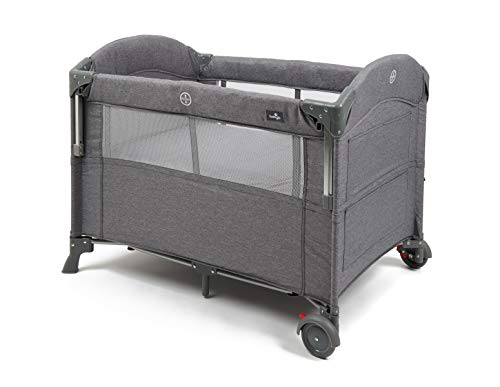The Importance of Bedside Cots for Infants: A Comprehensive Guide
As new parents embark on their parenting journey, they are challenged with a myriad of options concerning their infant's sleep arrangements. Among these options, the bedside cot sticks out for its myriad of benefits. This short article checks out the significance of bedside cots, discusses their advantages and downsides, answers often asked questions, and includes a relative table to assist parents make informed choices.
What Is a Bedside Cot?
A bedside cot is a sleep space designed to be put beside the parents' bed, enabling easy access to the infant during the night. via include adjustable height settings, enabling them to align with the height of the adult bed. Typically, they can be attached securely to the bed or stay close by, supplying a safe yet available sleep environment for the baby.
Types of Bedside Cots
- Co-Sleeping Cots: These cots attach safely to the parents' bed, permitting close distance while ensuring the baby has their own safe sleeping space.
- Freestanding Cots: These are located next to the bed however do not connect straight. They still provide a convenient reach for feeding and comforting.
- Portable Cots: These cots are light-weight and created for travel, typically featuring foldable styles and easy-transport abilities.
Advantages of Using a Bedside Cot
Bedside cots supply a number of benefits that can boost both the infant's sleep experience and the parents' assurance. These include:
1. Enhanced Safety
According to the American Academy of Pediatrics (AAP), having the infant sleep in the same room as parents, without sharing the very same sleeping surface area, substantially decreases the risk of Sudden Infant Death Syndrome (SIDS). A bedside cot provides a safe space while maintaining proximity.
2. Easier Nighttime Care
When a baby is within arm's reach, feeding, diaper modifications, and reassuring ends up being much more convenient. Parents can rapidly relieve their infant without fully waking from sleep or leaving the bed.
3. Support of Bonding
The close proximity supplied by a bedside cot motivates bonding throughout nighttime feedings or soothing. This can foster a sense of security for the infant and assistance develop more powerful psychological connections.
4. Space-saving Design
Numerous bedside cots are designed to be compact, making them perfect for small living spaces where a full-sized crib may not fit. They can be easily moved or saved when not in use.
5. Versatile Functionality
Many bedside cots can be adjusted in height and often include removable sides, making them versatile for numerous uses as the kid grows or household requires change.
Disadvantages of Bedside Cots
In spite of their advantages, there are some disadvantages to think about when selecting a bedside cot:
1. Restricted Lifespan
Bedside cots usually have a shorter life-span than basic cribs, often accommodating infants only approximately a particular weight or height. Parents might need to shift to a complete crib quicker than anticipated.
2. Stability Concerns
If not securely attached or properly placed, a bedside cot might present security issues. Parents need to make sure that the cot is stable and well-aligned with the bed.
3. Adjustment Period
Some infants may take some time to get used to sleeping in a cot, particularly if they are utilized to closer contact. Parents may require to be patient as their kid adapts.
How to Choose the Right Bedside Cot
When picking a bedside cot, parents ought to consider the following criteria:
- Safety Standards: Ensure the cot adheres to all safety regulations.
- Adjustability: Look for height-adjustable features that align with your bed.
- Building and construction Material: Choose a cot that is strong and made from non-toxic products.
- Reduce of Use: Opt for styles that permit one-handed operation when accessing the infant.
Table: Comparison of Popular Bedside Cots
| Function | Co-Sleeping Cot | Freestanding Cot | Portable Cot |
|---|---|---|---|
| Attachment to Bed | Yes | No | No |
| Adjustability | Yes | Yes | Yes |
| Travel-Friendly | No | No | Yes |
| Lifespan | 6-12 months | 18-24 months | 0-12 months |
| Price Range | ₤ 150-₤ 300 | ₤ 100-₤ 250 | ₤ 50-₤ 150 |
Regularly Asked Questions (FAQs)
1. Are bedside cots safe for my baby?
Yes, when utilized properly and according to security requirements, bedside cots are safe for infants. It is essential to make sure that the cot is securely located and does not posture any threat of falling.
2. At what age can I shift my baby from a bedside cot to a crib?
Most parents shift their baby from a bedside cot to a crib in between six months and two years, depending upon the infant's development and comfort level.
3. Can I use a bedside cot for twins?
While some bedside cots are designed to accommodate more than one child, many are meant for single infants. Parents of twins may require to consider using different cots.
4. How do I maintain my bedside cot?
Regular cleansing, checking for wear and tear, and ensuring that all parts, such as security straps and bed mattress, are in excellent condition, can assist keep your bedside cot.
Choosing the best sleep plan for an infant is one of the lots of choices that new parents face. A bedside cot offers exceptional benefit and security while enabling close parental interaction. Comprehending the benefits, downsides, and functions of bedside cots can empower parents to make the ideal choice for their household's needs. By weighing these elements along with safety preventative measures, parents can produce a nurturing sleep environment for their little ones.

